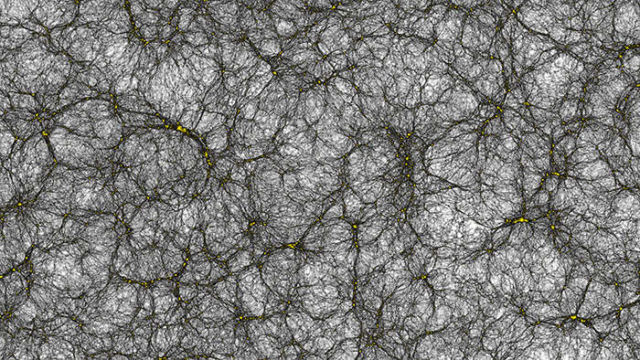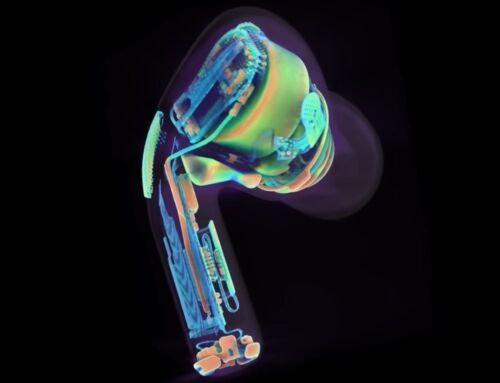Scientists at the University of Zurich have created the largest virtual Universe with a large supercomputer.
Using “2 trillion digital particles” of information the researchers at the University of Zurich, created the simulated universe, that will help them explore the nature of dark matter and dark energy.
Above, the Cosmic Web: A section of the virtual universe, a billion light years across, showing how dark matter is distributed in space, with dark matter halos the yellow clumps, interconnected by dark filaments. Cosmic void, shown as the white areas, are the lowest density regions in the Universe. (Image: Joachim Stadel, UZH)
The simulation that contains some 25 billion virtual galaxies, is the largest Universal simulation ever.
This catalogue is being used to calibrate the experiments on board the Euclid satellite, that will be launched in 2020 with the objective of investigating the nature of dark matter and dark energy.
About 95 percent of the Universe is dark. The cosmos consists of 23 percent of dark matter and 72 percent of dark energy. “The nature of dark energy remains one of the main unsolved puzzles in modern science,” says Romain Teyssier, UZH professor for computational astrophysics.
source University of Zurich
Enjoying This Story?
Subscribe to our newsletter and get our latest, sent right to your inbox.





Leave A Comment